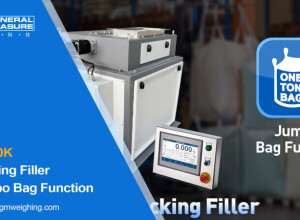[Article]: What Are Weighing Indicators? Functions, Types, and Industrial Applications
Weighing indicators, also known as weight indicators or scale controllers, are essential devices used to display, control, and transmit weight data from load cells or weighing platforms. These devices are critical in both simple and complex weighing systems across various industries.
What Is a Weighing Indicator?
A weighing indicator is an electronic device that receives input from a load cell or multiple load cells and converts the analog signal into a digital readout. It displays the weight value and often performs additional functions such as data transmission, signal processing, control output, and system calibration.
Key Functions of Weighing Indicators
- Weight display: Real-time digital readout of the applied load or mass
- Zeroing and Taring: Set zero reference and subtract container or packaging weight
- Signal amplification and conversion: Converts millivolt signals from load cells into readable weight values
- Data communication: Interfaces with PCs, PLCs, printers, and other systems via RS-232, USB, Ethernet, Modbus, etc.
- Control functions: Used for batching, filling, dosing, checkweighing, or automatic feedback loops
Main Types of Weighing Indicators
1. Basic Digital Indicators
Use: General purpose weighing, floor scales, bench scales
Features: Simple LED or LCD display, zero/tare functions, user-friendly interface
2. Industrial Indicators
Use: Harsh environments, automation, heavy-duty weighing
Features: Robust enclosures (stainless steel or IP-rated), programmable inputs/outputs, advanced calibration
3. Panel Mount Indicators
Use: Integration into control panels or machinery
Features: Compact design, DIN-rail or panel mount, programmable logic
4. Weighing Controllers
Use: Process automation, batch weighing, filling systems
Features: Multi-function control logic, PLC communication, recipe storage, alarms, and relays
5. Legal-for-Trade Indicators
Use: Commercial weighing applications (retail, freight, and certified industrial use)
Features: Approved by metrology authorities (e.g., OIML, NTEP), secure calibration, audit trail
6. Wireless and IoT-Enabled Indicators
Use: Remote monitoring, smart agriculture, logistics
Features: Bluetooth, Wi-Fi, or LoRa connectivity, cloud integration, mobile access
Common Applications of Weighing Indicators
- Industrial production: Automated batch control, dosing systems
- Truck scales: Weight display, vehicle overload control, data export
- Warehouses and logistics: Package weighing, label printing, ERP integration
- Retail and commerce: Legal-for-trade sales scales
- Agriculture: Livestock scales, silos, seed dispensing
- Food processing: Portion control, checkweighing, HACCP traceability
Features to Consider When Choosing a Weighing Indicator
- Display type: LED or LCD, backlight visibility
- Number of load cell channels: Single or multi-channel input
- Enclosure protection: IP65 or higher for wet or dusty environments
- Communication ports: USB, RS-232, RS-485, Ethernet, CANbus
- Integration: PLC compatibility, relay outputs, SCADA systems
- Legal compliance: OIML, NTEP, CE, or other certifications
Conclusion
Weighing indicators are the central hub of any electronic weighing system. Whether you're monitoring weight on a small bench scale or automating a complex batching system, the right indicator ensures accuracy, control, and connectivity. Modern indicators offer not only precision but also the intelligence to manage data, automate processes, and meet regulatory requirements.
Looking for the Right Weighing Indicator?
At Weighing Review you will find articles and other contents about all type of scales and other weighing solutions such as technical articles, videos, case studies and guides. You can also search the Suppliers Directory and Marketplace to find the best supplier and product for your weighing needs.









































Interested? Submit your enquiry using the form below:
Only available for registered users. Sign In to your account or register here.